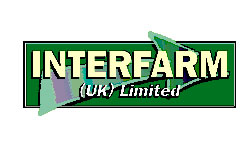
At a time when low-cost home produced feed is more important than ever, ensuring better and quicker ley establishment will maximise yields of quality grass. Interfarm UK Ltd is therefore advising farmers to use the residual and contact-acting post-emergence herbicide, Leyclene on their new grass leys and grass seed crops.
"Livestock production from grass can only be maximised when stock have access to dense, productive weed-free swards. Re-seeding can improve grass productivity and new leys have a higher dry matter yield, better palatability and digestibility than older swards. They will also improve feed intakes and animal performance. But re-seeding cultivations stimulate weed seed germination and seedlings of grass and broad-leaved weeds can take over before the new ley is established. Chickweed and annual meadow-grass are major problems in new-sown grass, affecting yield and palatability, and are present in almost 90% of new leys. By controlling these more competitive weeds with Leyclene, growers will optimise establishment, bringing the grass into economic production as soon as possible and ensuring maximum quality and yield," says Dr. David Stormonth, Technical Manager for Interfarm UK.
"Containing a unique blend of ethofumesate, bromoxynil and ioxynil, Leyclene is a reliable, broad-spectrum herbicide for new grass leys. It controls all the important broad-leaved weeds, including bindweed, charlock, chickweed, cleavers, red-dead-nettle, docks, fat-hen, speedwells, volunteer rape and mayweeds as well as annual meadow-grass which can reinvade leys in the spring. Leyclene should be used when weeds are small, are actively growing and when conditions are moist, allowing its residual activity to work to best effect," advises Dr. Stormonth.
"In the early spring Leyclene is recommended as a follow-up treatment alone or in mix with a straight ethofumesate that has specific approval in grassland. A sequence is effective for the control of annual meadow-grass in a rye-grass ley. If it was not possible to apply Leyclene last autumn, an early spring applied treatment tank-mixed with ethofumesate will be effective this spring. Leyclene is the foundation herbicide for effective grassland weed control, helping farmers manage the quality and longevity of their new leys," concludes David.
Leyclene contains 200 g/l ethofumesate, 500 g/l bromoxynil and 25 g/l ioxynil formulated as an emulsifiable concentrate and is packed in a 5 litre container. It is recommended at 5 l/ha on new sown leys and grass-seed crops from when the crop has at least 2-3 leaves and is healthy. Leyclene can be applied in the autumn and spring with the latest time of application being up to 6 weeks before cutting or grazing. It has a maximum number of treatments of two per crop and is subject to LERAP B regulations.
